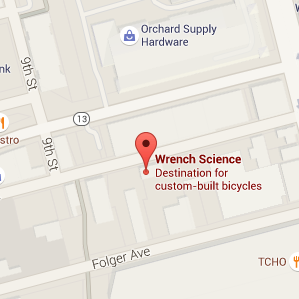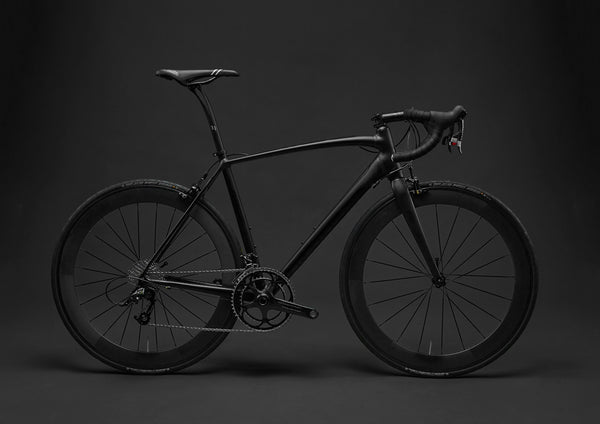Why choosing the right handlebar width is important?
Choosing the right handlebar width for your riding will help unlock hours of pain-free cycling. If you pay attention to professional cycling, you’ll probably be aware that handlebar width in the pro peloton has been getting increasingly narrower over the past few years. The reason for that is to try to reduce the frontal space of the rider to increase aerodynamic performance.
For those marginal gains, riders have tried everything from angling the hoods towards each other to using handlebars that are as narrow as 360 and even 320 mm. Things have gotten so bad that the UCI has even started regulating such actions, limiting handlebar widths to no less than 360 mm and defining the greatest angle that riders can turn in their hoods on the bars (though there still is some question about just how effective these measures are at stopping transgressors).
In any case, handlebar width is another of the many instances where it is not always the best idea to follow the lead of the pros. To put it another way, choosing the right handlebar width for your road bike, and indeed your mountain bike and gravel bike, should first of all be based on the level of comfort and control that you will have when riding. The aerodynamics of the set-up should only be a secondary consideration unless you are aiming to make the Olympic team or something equally competitive.
How to determine handlebar width
If you are just beginning to ride a road bike, then the most common way to decide which handlebar width will be right for you is to find a width that corresponds closely to the width of your shoulders. Going too narrow will make the handling feel twitchy while wider bars will instill a certain level of control and confidence. However, be careful not to go too wide because then the steering will feel heavy and non-responsive. And if you are trying to go narrow for aerodynamic purposes, be aware that if your narrow bars just force you to jut your elbows out, you are causing more drag than using wider bars that allow your arms to stay well tucked at your sides.
Gravel bikes have played a big role in popularizing the concept of the flared handlebars. That’s when you’ll have a slightly narrower width at the hoods that will then flare-out in the drops. The design is intended to offer a dropbar bike the best of both worlds: you can have an aero front when riding on the narrow hoods but enjoy all the control of wider bars when riding in the drops, especially if you are negotiating rough terrain or descending on loose gravel.
Similarly, mountain bike handlebars are even wider, again with the emphasis being on the level of control the wider bar will encourage. But wider doesn’t always mean better. You can definitely go too wide, which could result in reduced control, decreased performance, and even shoulder injuries. The bars should be wide enough to have the leverage you need to stay in control on rough trails, but narrow enough to facilitate a wide range of motion in technical situations.
We’ve found that 760 mm is a good starting point for mountain bike handlebar width. From there it is just a matter of testing the size to see whether you want to go a little wider or even a little narrower. Smaller riders will typically have narrower shoulders and benefit from narrower bars, while tall riders will want even wider bars to correspond with their wider shoulders.
It’s all about bike fit
No matter the type of bike you are riding, determining handlebar width does not happen in a vacuum. That is to say, it is all a part of the process of getting the perfect bike fit, making sure saddle height is correct, stem length, crank length, all these things will also impact how you feel on the bike and how much control you have.
For instance, if you opt for a 42 mm wide bar, then you will also need to make sure you take that into account when determining your stem length since the wider the bar, the greater the reach. Similarly, if you want to test how well you like the trend towards using narrow bars, then you might need to lengthen your stem to compensate for the reduced reach and increased twitchiness in the handling. And anyone who rides with integrated one-piece barstems will want to be certain they are making the right decision since any mistakes could be costly in materials.
Conclusion – how to choose the correct bike handlebar size
Though it can be fun to try out new performance trends that the pros use, doing so at the cost of comfort and control is hardly a worthwhile trade off. Trying to go too narrow with road bike handlebars can get you into a lot of trouble when it comes to comfort and handling. And if the position ends up hurting your wrists or splaying your elbows out very wide, then the minimal gains will come at a painful price.
The same applies to going too wide for mountain bike bars, where shoulder injuries can result and control on technical sections can suffer.
Our best recommendation is to ask a trusted bike fitter for advice if you are considering changing your bar width. And make sure you take into account any knock-on effects that handlebar changes might cause.
You may also like our article on bike frame materials.































































































































































































































































